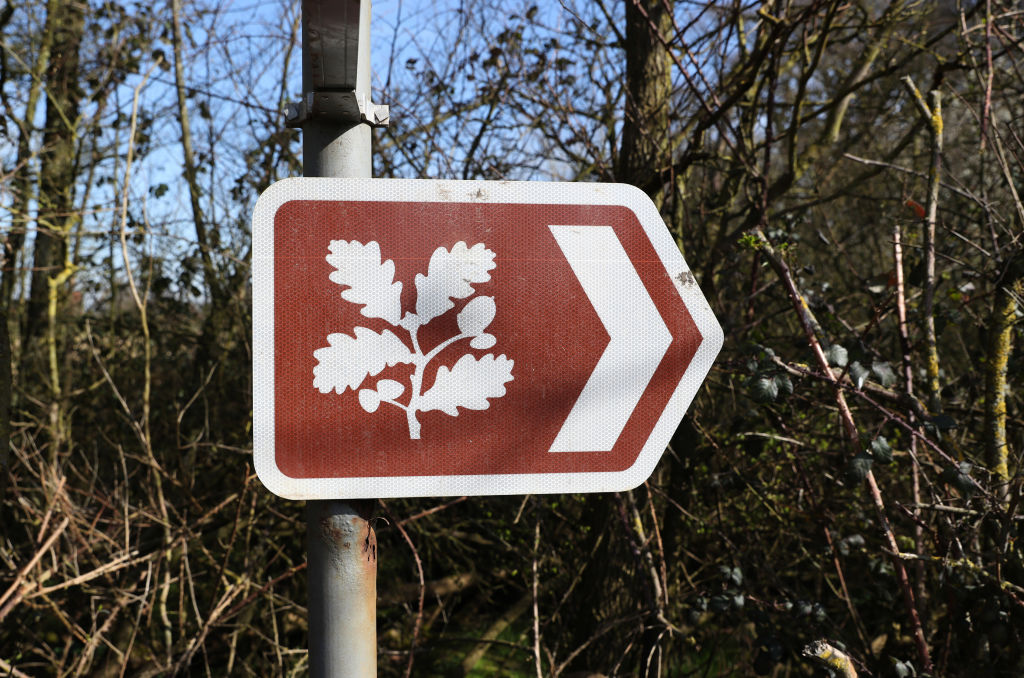The National Trust still doesn’t get it. It still doesn’t understand why so many of its members hate the politicisation and catastrophic dumbing-down of an institution they once revered.
Hilary McGrady, the Trust’s Director-General, has just defended the Trust’s report on colonialism and slavery. The report, released last September, looked into the colonial or slavery links of its properties, including Winston Churchill’s Chartwell home and William Wordsworth’s house. McGrady said the Trust should ‘make sure we tell all of the stories about all of our properties’.
That’s the problem. The Trust isn’t telling all of the stories these days. For the past ten years, it has been on a relentless, one-sided drive to politicise its properties. Every year, it has a new slanted angle to its buildings: whether it’s about women’s rights, LGBT or colonialism. Each of those angles are fine in their own right. But the National Trust now devotes itself just to one side of the coin: the ‘We are all guilty’ side. Guilty of appalling behaviour in our dreadful history.
The extraordinary intellectual, artistic and architectural past of the Trust’s great buildings takes a back seat to a shoddy, one-sided, politicised view of history. Facts and beauty are eclipsed by a unified opinion: that British history is bad and to be apologised for.
For the past ten years, the Trust has been on a relentless, one-sided drive to politicise its properties
What’s more, the intellectual standards of that unified opinion are woeful. The collapse of intelligence has been going on for a decade at the Trust, once a repository of scholarship and aestheticism. At Hughenden Manor, Isaac D’Israeli, father of Benjamin Disraeli, the Victorian prime minister, was called ‘Isaace’. Guidebooks I saw on a tour of National Trust properties were littered with spelling mistakes: society spelt ‘soceity’; closely spelt ‘closey’.
And the same shoddiness applies to the Trust’s researches into colonialism and slavery. It’s one thing to write interesting, well-written things about the undeniable colonial past and slavery links of many of the Trust buildings’ owners. It’s another thing to do it badly, with terrible howlers and very bad writing standards.
Charles Moore has written in The Spectator about the Trust’s low-intellect offering for its property, Kedleston Hall, and its former owner, Lord Curzon. The Trust website has a biographical ‘essay’ about Curzon, detailing his ‘racist ideology’, with a quotation saying: ‘There was never a man so bereft of conscience, of charity or of gratitude.’ Moore sent the essay to Curzon’s biographer, David Gilmour, who informed him of the mistakes in the essay:
‘Curzon was not ‘relegated to the backbenches’ in 1898: he was made Viceroy of India. He did not convert the ground floor of Kedleston into the museum in 1927: he had been dead two years. He did not make ‘colonial’ expeditions to Persia, Russia and Korea before becoming Viceroy. None of these places was a colony, and Curzon visited them as an independent traveller. The website says he was asked to ‘stand down’ as an MP at the 1906 election: he was not an MP at that time.’
What’s more, the Kedleston essay didn’t mention that Curzon had given two other great buildings — Tattershall and Bodiam — to the Trust and restored another, Montacute, which the Trust later took over.
A now-deceased former senior employee of the Trust once told me:
‘What you must understand is that a lot of senior people at the Trust actually don’t like old buildings.’
For a long time, the Trust’s magazine very rarely had sufficient pictures of its great buildings; let alone ran articles extolling their beauty and enthralling history. I’ve noticed that’s changed – slightly – in recent issues, as the Trust realises it’s turned the dial against houses too far.
But, still, last summer, the Trust revealed its ten-year strategy: to ‘dial down’ its role as a cultural institution and move away from being the custodian of the English country home. The plan is to store collections and prioritise being a ‘gateway to the outdoors’. The Trust declared, in its horrible managementese, that the ‘outdated mansion experience’ is serving a ‘loyal but dwindling audience’.
That remains the Trust’s overwhelming direction: against history, beauty, knowledge, facts and intellect.
Harry Mount is author of How England Made the English (Penguin)






Comments